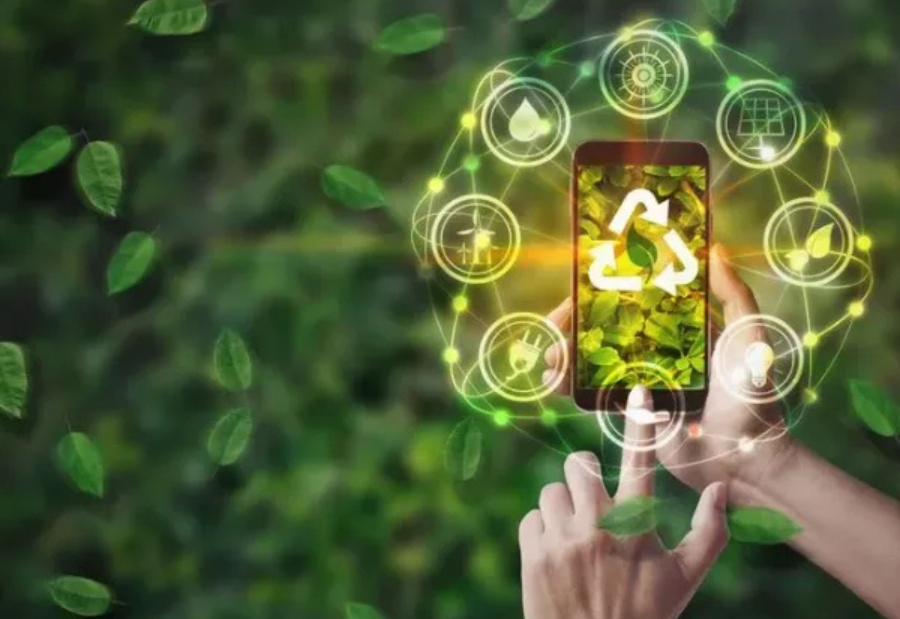As we speak, climate change and sustainability have become the two most pressing challenges. From rising temperatures to extreme weather events, the effects of climate change are undeniable, and the need for sustainable solutions is highly required. Technology is critically important to combat climate changes and promote sustainability.
Through various innovative renewable energy solutions, smart agricultural methods, or waste management, technology helps reduce the environmental impact and support the transition to a greener future.
Join us today as we sail through the various ways in which technology assists in addressing climate changes and promotes sustainability.
- Renewable Energy Innovations
The development of renewable energy sources is at the top of the list to address climate changes. Solar, wind, hydro, and geothermal technologies reduce our reliance on fossil fuels and provide a clean and legitimate energy alternative.
Solar Power: Advances in solar panel technology have led to an effective and cost-friendly system, allowing more homes and businesses to adopt clean energy.
Wind Energy: Wind turbines have become larger and productive as they help provide massive amounts of clean electricity to communities around the globe.
Energy Storage Solutions: New technologies in energy storage, such as improved batteries, are making it easier to store renewable energy for use when the sun isn’t shining or the wind isn’t blowing.
Switch to these renewable energy sources to reduce the carbon emissions and impact of climate changes.
- Smart Agriculture and Precision Farming
Agricultural industry is another factor that helps in contributing and addressing climatic changes. Precision farming uses data and smart devices to reduce resource use while increasing crop yields.
Drones and Satellites: Drones and satellites help farmers monitor crops, soil conditions, and water usage to ensure potent use of resources.
AI and Machine Learning: AI algorithms have the ability to predict optimal planting and harvesting times. This in turn allows farmers to refine crop productivity, whilst reducing water, fertilizer and pesticide usage.
Sustainable Irrigation Systems: Tech-powered irrigation systems help farmers manage water consumption, an essential step in reducing water waste and conserving natural resources.
These technologies promote sustainability in farming, reducing the environmental impact of food production while ensuring food security for the future.
- Electric Vehicles (EVs) and Sustainable Transportation
Transportation is a major contributor to carbon emissions, but the rise of electric vehicles (EVs) and sustainable transport options offers hope for a cleaner future.
Electric Vehicles (EVs): EVs reduce the reliance on gasoline and diesel, offering a cleaner, more energy-efficient alternative. Innovations in EV battery technology are making these vehicles more affordable and accessible.
EV Charging Infrastructure: Advances in fast-charging stations and improved battery storage are enabling the widespread adoption of EVs.
Public Transport Innovations: Tech innovations like electric buses and autonomous vehicles are reshaping public transport systems to be more sustainable and energy-efficient.
By adopting electric vehicles and improving transportation infrastructure, we can reduce the carbon footprint of transportation and create cleaner urban environments.
- Smart Buildings and Energy-Efficient Infrastructure
Buildings account for a significant portion of global energy consumption and carbon emissions. Technological advancements in building design, construction, and operation are helping reduce energy usage and environmental impact.
Smart Thermostats: Devices like smart thermostats optimize heating and cooling systems, ensuring energy is used efficiently in homes and businesses.
Green Building Materials: New, eco-friendly materials are being developed to reduce the environmental impact of construction. These materials improve insulation, reduce waste, and are sourced sustainably.
Energy Management Systems: Smart energy management systems allow businesses and homeowners to monitor and control energy usage, further reducing waste.
By integrating these technologies into building designs, we can significantly cut down on energy consumption and support sustainable living.
- Waste Management and Recycling Technologies
Waste is a growing problem, and the efficient management of waste plays a significant role in sustainability. Technology is helping address waste management in various ways, from improving recycling processes to reducing waste generation.
AI-Powered Sorting Systems: AI and robotics are making waste sorting more efficient, ensuring that recyclable materials are properly separated and processed.
Waste-to-Energy Technologies: Technologies like anaerobic digestion and waste incineration are turning organic waste into clean energy, reducing landfill waste and providing renewable power.
Smart Waste Management Systems: IoT-enabled waste bins can track when they’re full and need to be emptied, improving waste collection efficiency and reducing unnecessary trips.
These technologies contribute to a circular economy, where waste is minimized, and resources are reused and recycled.
- Carbon Capture and Storage (CCS) Technologies
One of the key challenges in addressing climate change is removing carbon dioxide (CO2) from the atmosphere. Carbon capture and storage (CCS) technologies are being developed to capture CO2 emissions from industrial sources and store them underground to prevent them from entering the atmosphere.
Direct Air Capture: New technologies can capture CO2 directly from the air and either store it underground or convert it into useful products, such as building materials.
Carbon Sequestration in Agriculture: Certain farming techniques, such as planting trees and restoring soil health, can naturally sequester carbon, helping to absorb excess CO2 in the atmosphere.
CCS is an important tool in the fight against climate change, especially as industries look for ways to offset their emissions.
- Water Purification and Conservation Technologies
Water is one of the most valuable resources on Earth, and technology is playing a vital role in ensuring sustainable water use and improving access to clean water.
Desalination Technology: Advanced desalination processes turn seawater into freshwater, providing new sources of drinking water for regions facing water scarcity.
Water Purification Systems: Innovations in filtration and purification systems ensure that clean water is accessible even in remote areas.
Smart Water Management: IoT-enabled sensors help monitor water usage, detect leaks, and optimize water distribution systems.
These technologies are crucial for ensuring that future generations have access to clean and reliable water sources.
Conclusion
Technology is playing an increasingly important role in addressing climate change and promoting sustainability. From renewable energy innovations to smart agriculture, clean transportation, and waste management, these technologies are driving the shift toward a greener, more sustainable world. As the world continues to face environmental challenges, the role of technology will only become more critical in reducing carbon emissions, conserving resources, and ensuring a better future for all.
As individuals, businesses, and governments continue to adopt these technologies, we can work together to create a more sustainable, climate-resilient world for generations to come.
Let’s take action today for a greener tomorrow—embracing technology for a sustainable future!
Also read: Viksit Workforce for a Viksit Bharat
Do Follow: The Mainstream formerly known as CIO News LinkedIn Account | The Mainstream formerly known as CIO News Facebook | The Mainstream formerly known as CIO News Youtube | The Mainstream formerly known as CIO News Twitter
About us:
The Mainstream formerly known as CIO News is a premier platform dedicated to delivering latest news, updates, and insights from the tech industry. With its strong foundation of intellectual property and thought leadership, the platform is well-positioned to stay ahead of the curve and lead conversations about how technology shapes our world. From its early days as CIO News to its rebranding as The Mainstream on November 28, 2024, it has been expanding its global reach, targeting key markets in the Middle East & Africa, ASEAN, the USA, and the UK. The Mainstream is a vision to put technology at the center of every conversation, inspiring professionals and organizations to embrace the future of tech.




